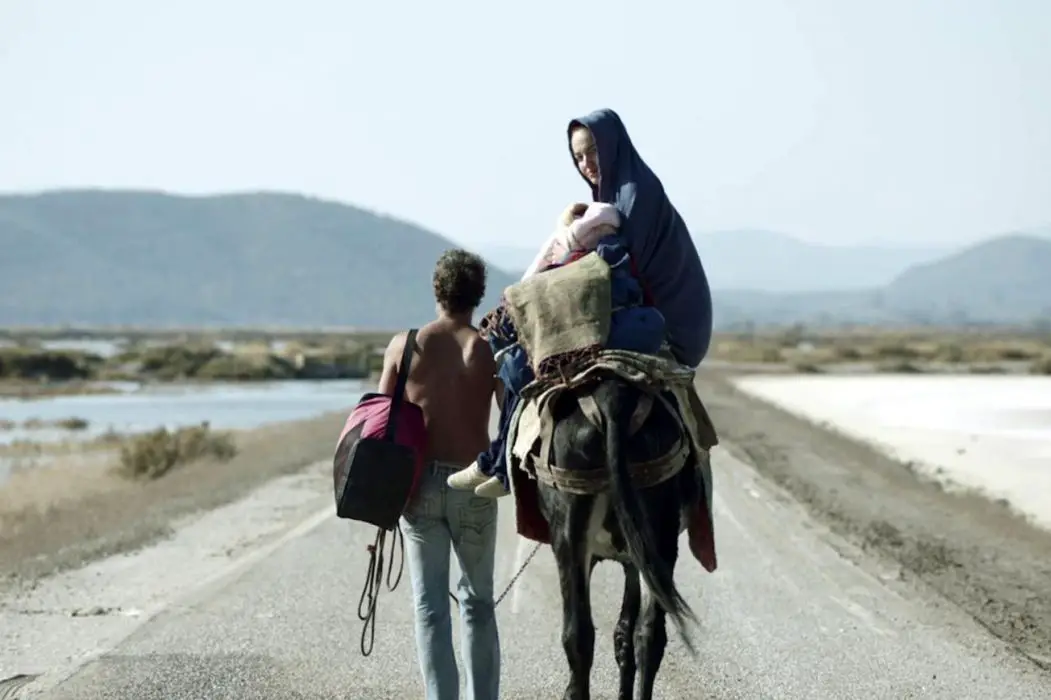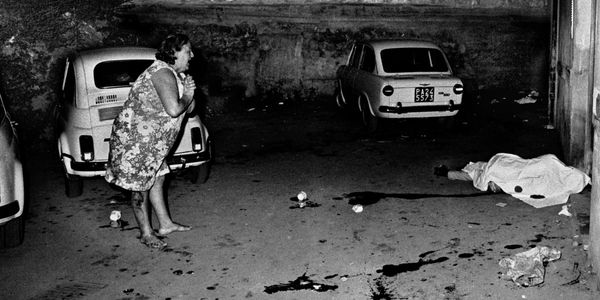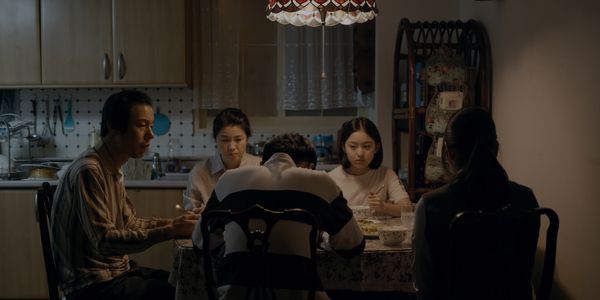Fantasia Film Festival 2019: A Tasting Menu

Soham Gadre is a writer/filmmaker in the Washington D.C. area.…
The festival circuit generally creates a dichotomy between “genre film” and “art film”, relegating the former to being big-budget Hollywood fare or small-budget schlock and the latter being understated Euro-centric auteurist cinema. The Fantasia Film Festival’s focus on genre cinema, especially those from Asian cinema where the festival takes its cultural roots (it was first established as part of Montreal’s Asian film scene), allows for genre and art to be merged into one and acknowledges that you don’t need an exorbitant amount of money to create something compelling, imaginative, and attuned to the traditions of the medium.
This year was my first time covering the Fantasia Film Festival, remotely I might add because Montréal is a little too out of my way at the moment, so I decided to get a tasters sample of what the festival had to offer. I purposefully picked to cover one documentary feature, one animated feature, one Asian feature, and one non-Asian feature so that I could cover as many corners from the festival’s diverse range of screenings as possible. While I didn’t exactly love all of the movies I ended up screening, hopefully, this selection still gives a good glimpse of the kind of cinema that Fantasia loves and will impart a sense of curiosity to readers on checking this festival out in the future.
Shooting the Mafia (Kim Longinotto)

Documentary filmmakers generally have two choices. They can create their own first-person documentation of people’s lives and histories, a la Steven James’ Hoop Dreams and Terry Zwigoff’s Crumb, or compile a ready-made history recorded by a subject who lived it, a la Werner Herzog’s Grizzly Man or Banksy’s Exit Through the Gift Shop. Kim Longinotto, who I first discovered through her film Pink Saris on India’s Gulaabi Gang, a grassroots movement of elderly women fighting for gender equality, chooses the latter method for Shooting the Mafia, a movie both about the Sicilian mafia clans of Corleone and Palermo, and the brave L’Ora journalist Letizia Battaglia who photographed their horrific crimes.
Like Timothy Treadwell in Grizzly Man, Letizia Battaglia’s photography is jarring and jaw-dropping not only for the other-worldliness of what it depicts but because we must acknowledge the impossibly close approximation to danger she was in when shooting it. Battaglia, Italy’s first professional woman photographer, mentions being threatened with death and rape many times during her coverage of the mafia. Longinotto accompanies Battaglia’s narration of how the Sicilian mafia terrorized communities for decades in Sicily with Battaglia’s own gutting footage of women being beaten, corpses with blood leaking out of them, children cowering in fear, and families crying in the wake of endless death.
The film’s greatest achievement is that it, with use of on-ground, authentic and unfiltered footage by its subject, completely demystifies our notion of organized crime and la cosa nostra developed through Hollywood films and TV. It paints them for what they really are, a terrorist group bent on gaining and manipulating power to their advantage by any means necessary. This film is as much credited to Longinotto’s ability to frame a compelling and convincing narrative around tumultuous life amidst Sicilian crime organizations as it is to Battaglia’s immeasurably brave efforts to expose the realities of the mafia to a world that knows them only through the sepia-tinted frames of The Godfather.
The Moon in the Hidden Woods (Takahiro Umehara)

I’m not sure what the restrictions of the term “anime” are. While it is predominantly defined through Japanese animation, the term “anime” is used in Japan for nearly everything that is animated. It has also become more ambiguous now with Japanese studios and filmmakers outsourcing a lot of their work to Korean animators. I guess bearing that in mind, I will take the liberty of calling Takahiro Umehara’s The Moon in the Hidden Woods, a Korean animated film by a Japanese filmmaker, an “anime”.
The Moon in the Hidden Woods works as an extension of the legend of Dalsun and Haesik, centering on a desolate world that has been absent of the moon which has been replaced by a strange sentient sky of purple-red smog called Muju that is slowly eating up everything in sight. The central characters, a young princess named Navillera and a village drummer boy named Jang-gu, somewhat of a proxy for Dalsun and Haesik characters respectively (and their connection to the Sun and Moon is metaphorically hinted at), must work together to bring the moon back and save their home. The film also features a mischievous character dressed in tiger-stripes, another reference to the legend, named Gunther.
This is a film very excited about its own myth-making and uses that excitement mainly on a brilliantly colorful and imaginative canvass that tries hard to compensate for the lack of compelling story. Relying too much on the narrative cliches of popular Japanese anime films, Umehara fails to give any weight to the stakes of the central characters. Their importance is never set up from the beginning the way heroic legends generally are. Rather, the movie hastily fills in details through flashback sequences of their past which the characters conveniently remember only when their lives are nearly about to end. The Moon in the Hidden Woods ends up being a classic case where the gift-wrapping is more impressive than whatever’s inside the box.
The Miracle of the Sargasso Sea (Syllas Tzoumerkas)

The titular sea in question is an area of the Atlantic Ocean, far off the southeastern coast of the United States, which is home to nesting grounds for the Mediterranean eel. It so happens that one of the central characters, Rita (Youla Boudali), works at an eel hatchery and she’s looking to leave her unhappy life in Greece for Miami. Every object and person is a metaphor in the world Tzoumerkas is examining, including Rita and a local police chief Elisabeth (Angeliki Popoulia, of Dogtooth fame), who are spiritually linked. While Rita toils in depression and abuse from her brother and his nefarious circle of friends, Elisabeth tries to reconcile her anger and resentment over losing her previous position in Athens, letting her frustration boil over into her duties as a police officer.
Taking cues from Claire Denis’s Bastards, a noir which also centers on an ambiguous ring of rape and violence, Tzoumerkas leads us down a treacherous path from two angles which remain ambitious but quickly getaway of the film’s intellectual grasp. The heavy-handed symbolism and religious allegory, mostly shown through intermittent vignettes of modern bohemians re-enacting scenes from the Nativity story, don’t do the movie any favors either. Say what you want about the pretentiousness of Lars von Trier’s intellectual babble, like his fly-fishing metaphors in Nymphomaniac, but there is a knot at the end of the string. There is at least a concluding paragraph stamping all of Von Trier’s points.
Tzoumerkas, on the other hand, doesn’t seem to know where any of his interesting leads are going, or what his philosophical discourse is trying to piece out. To be clear, this isn’t a case of frustrating ambiguity. The Miracle of the Sargasso Sea does have a conclusive ending, but it’s not one that justifies the maze that it takes to get there.
House of Hummingbird (Kim Bora)

Films generally focus on children’s stories during crucial times in a nation’s history because children are the only ones who predominantly process political strife internally because they don’t have the knowledge base of history to process it externally. This gives for deeper narratives in cinema because it allows the filmmaker to explore the intangible instead of just basic history.
Kim Bora’s House of Hummingbird focuses on 14-year-old Eun-hee (Ji-hu Park) as she comes of age amid the election of South Korea’s first-ever civilian president in 1993. The movie’s slice-of-life approach amid larger-scale democratic shifts, only seen through snippets of newsreels, is similar to Yasujiro Ozu’s Tokyo Story where the family becomes the central point of social change. Eun-hee’s household is where we really see the effects of politics take place, with her father’s business struggling, her brother’s college admissions approaching, and Eun-hee and her sister acting out teenage angst in a rebellion against conservative traditionalism.
House of Hummingbird is a restless film, embodying the mind of its central teenage character who is having both a sexual identity crisis and helplessness amidst an abusive brother and neglectful parents. Eun-hee talks multiple times over whether her parents will cry if she dies, and consistently looks to gauge their reactions of approval or disapproval to her health (she has a mild growing tumor under her cheekbone). She makes and loses friends, she becomes more outgoing and then shuts completely down. She finds a ray of stability in her Chinese school teacher Young-ji (Sae-byeok Kim), but even this is short-lived.
In an interview with MUBI Notebook, Kim Bora said the film is not autobiographical in the literal sense but formed with the knowledge that trials and tribulations of young adulthood are a near-universal concept. Bora certainly knows the nuances of her subject inwards and out and makes sure that we know there is no hero or villain, simply a family trying to find its way around each other, and around what newly elected president Kim Young-sam declared a “New Korea”.
For more information on the Fantasia International Film Festival, visit their website here.
Does content like this matter to you?
Become a Member and support film journalism. Unlock access to all of Film Inquiry`s great articles. Join a community of like-minded readers who are passionate about cinema - get access to our private members Network, give back to independent filmmakers, and more.
Soham Gadre is a writer/filmmaker in the Washington D.C. area. He has written for Hyperallergic, MUBI Notebook, Popula, Vague Visages, and Bustle among others. He also works full-time for an environmental non-profit and is a screener for the Environmental Film Festival. Outside of film, he is a Chicago Bulls fan and frequenter of gastropubs.













